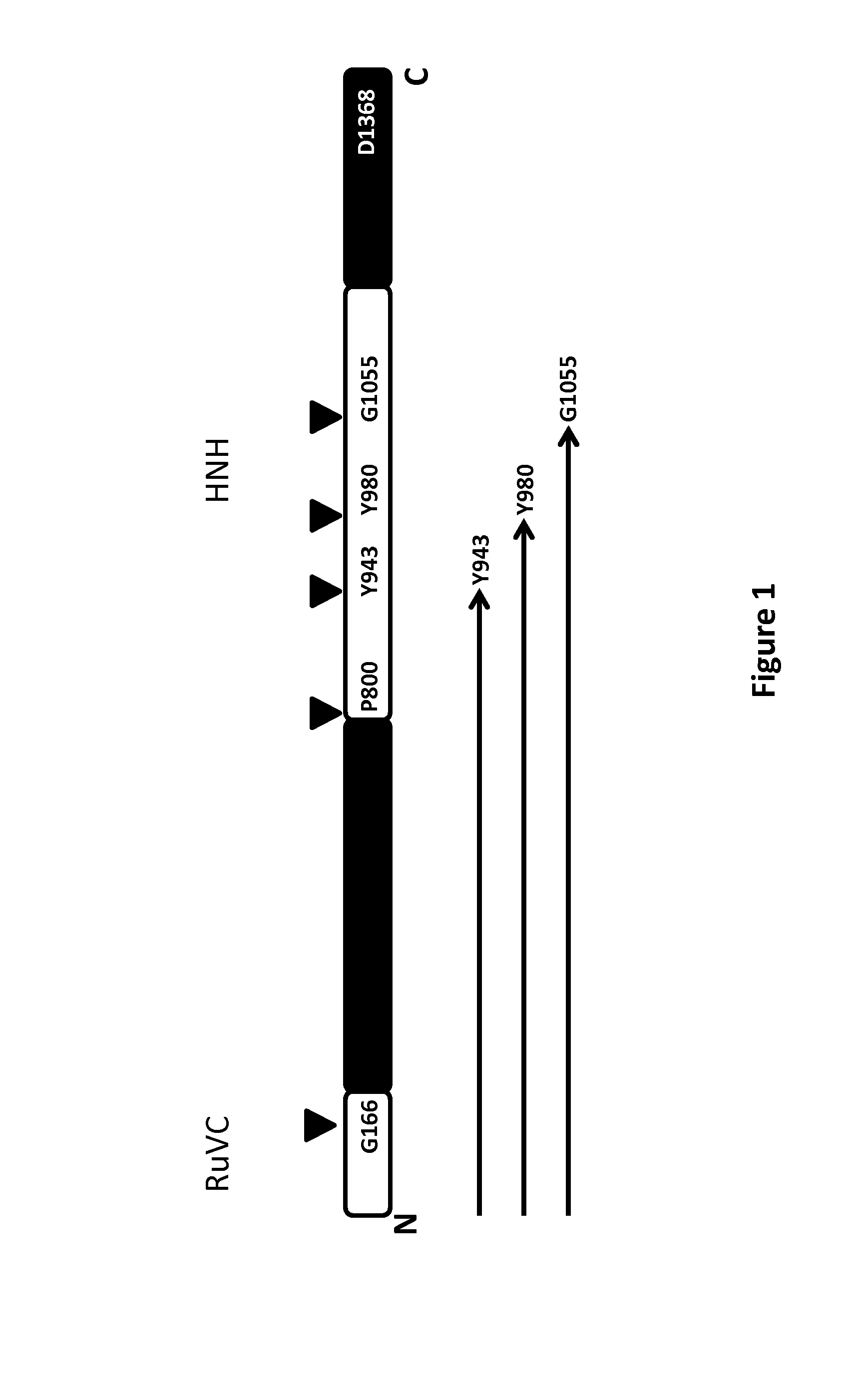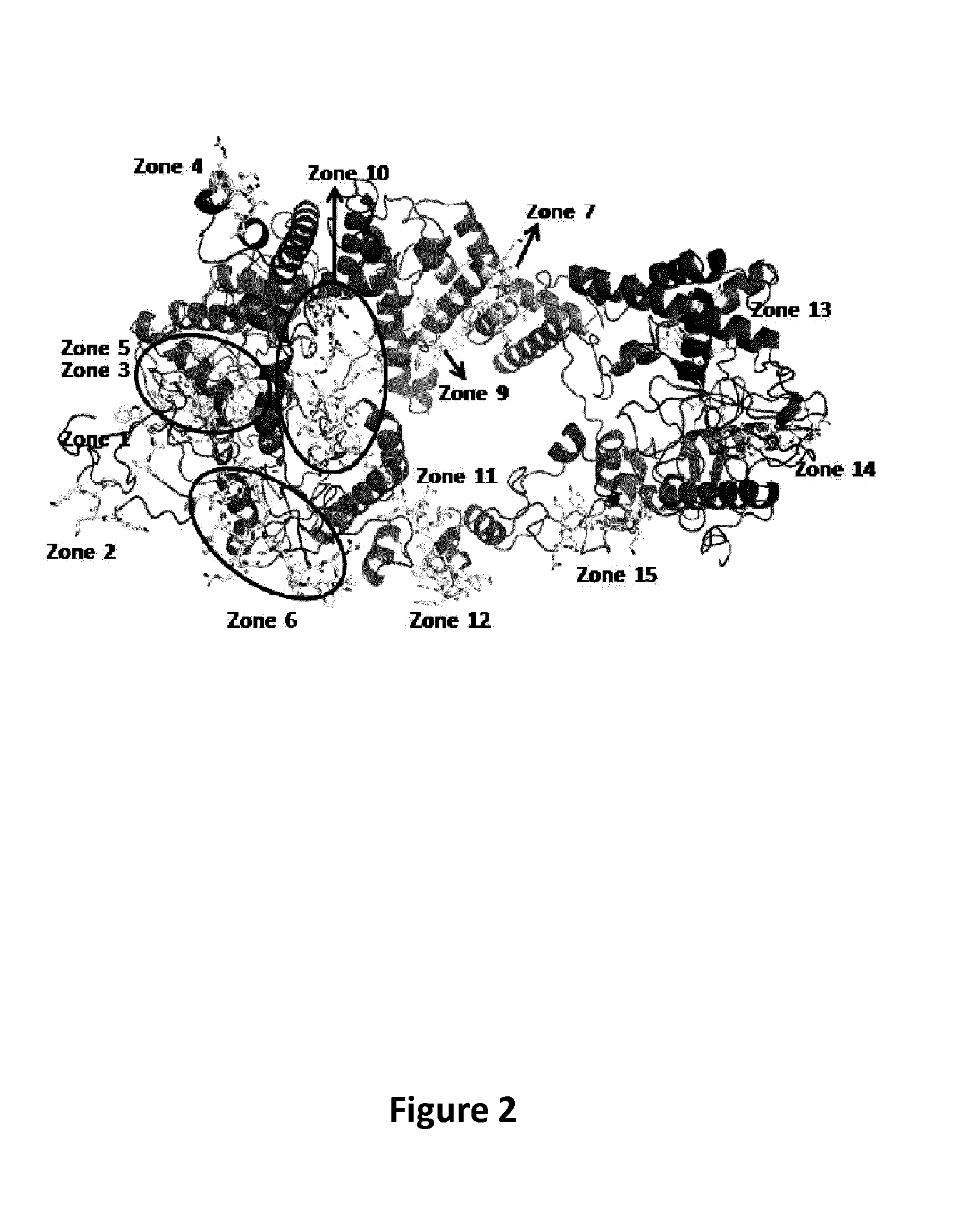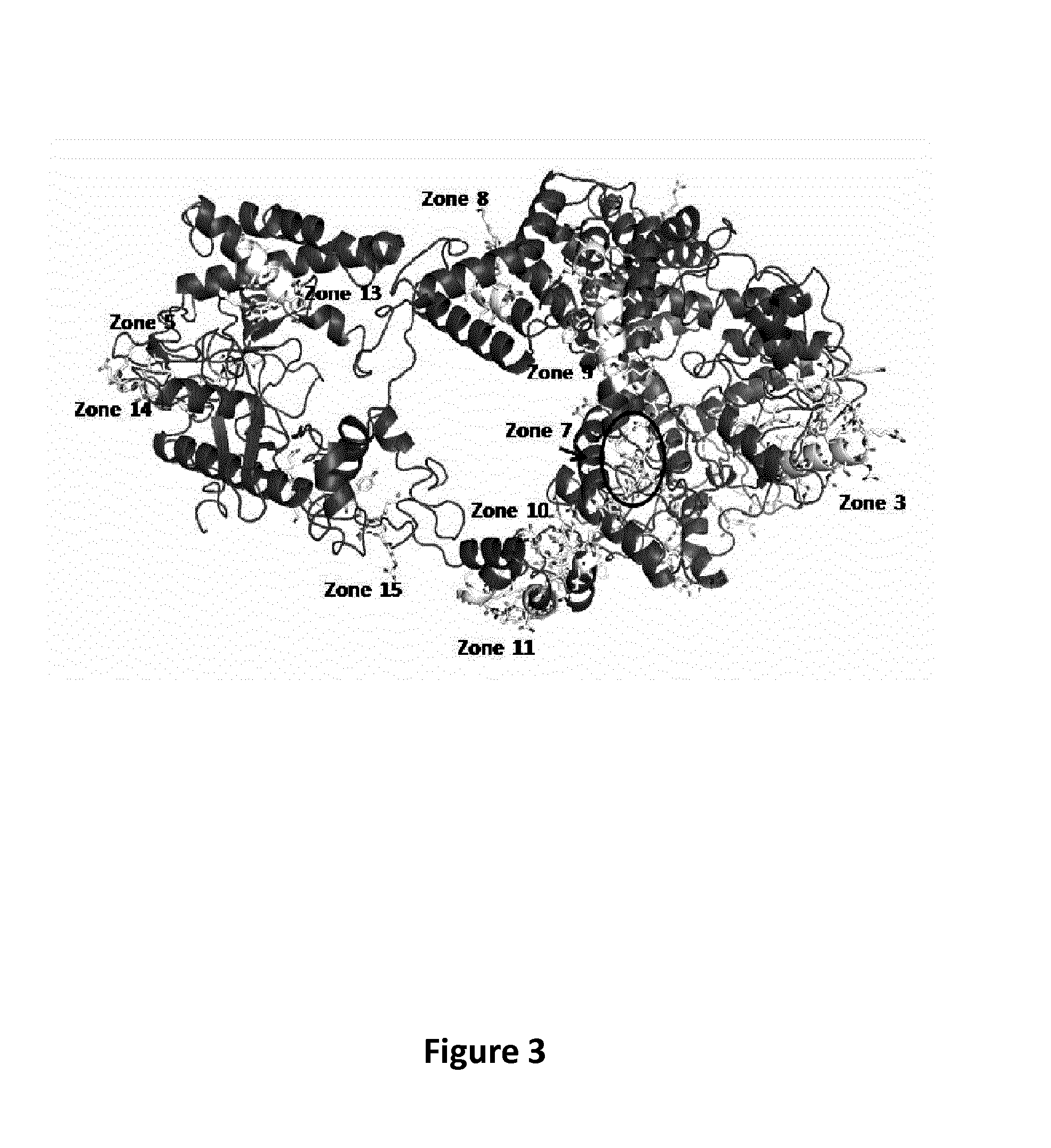New compact scaffold of cas9 in the type ii crispr system
a cas9, crispr technology, applied in the direction of enzymology, microorganisms, artificial cell constructs, etc., can solve the problem of bluet cleavage of invasive dna
- Summary
- Abstract
- Description
- Claims
- Application Information
AI Technical Summary
Benefits of technology
Problems solved by technology
Method used
Image
Examples
example 1
Identification of Conserved Sequence Segments of Cas9 Homologues
[0113]In order to increase the efficacy of transfection and vectorization the inventors perform truncations of the protein of Cas9 of S. pyogenes (gi|15675041|). The truncated forms of Cas9 will be tested in mammalian cells for efficiency of NHEJ and HR. A first strategy implies a semi rational approach based on the identification of conserved sequence segments of homologues of Cas9 Pyogenes. The strategy is based on the use of data derived from sequence features of Cas9 of pyogenes i.e. sequence homologues as well as secondary structure predictions and protein domain boundaries predictions.
[0114]The sequence of S. pyogenes Cas9 belongs to the COG3513 (Predicted CRISPR-associated nuclease, contains McrA / HNH-nuclease and RuvC-like nuclease domain). The alignment of sequence members of COG3513 has been used to build two sequence motifs, each one next to one of the two known catalytic domains RuvC and HNH. The two designed...
example 2
Identification of Shorter Cas9 Homologues and Digestion of the C-Terminal Domain of Cas9
[0123]The present study further allows identifying four putative natural Cas9 homologues with shorter sequence (SEQ ID NO: 26 to SEQ ID NO: 29). These natural shorter Cas9 versions have been aligned with the S. pyogenes Cas9 using DIALIGN 2.1.1 software as described above. The alignments of the shorter Cas9 homologues are presented in Table 5 as follows:
1)D4IZM9_BUTFI(SEQ ID NO: 26) 765 AA2)Q9CLT2_PASMU(SEQ ID NO: 27) 1056 AA3)E0G5X6_ENTFL(SEQ ID NO: 28) 936 AA4)E0XXB7_9DELT(SEQ ID NO: 29) 1011 AA5)S. pyogenes Cas9(SEQ ID NO: 3)1368 AA
[0124]The protein secondary structure of shorter Cas9 has been predicted using the PSIPRED secondary structure prediction method (Jones 1999; Buchan, Ward et al. 2010) (See Table 6).
[0125]For all the shorter sequence homologs (D4IZM9_BUTFI, Q9CLT2_PASMU, E0G5X6_ENTFL, E0G5X6_ENTFL; SEQ ID NO: 26 to SEQ ID NO: 29) position T956 seems to be quite conserved anyway lo...
example 3
Identification of the Residues Involved in the DNA / RNA Binding Specificity of S. pyogenes Cas9 and Homologues Thereof
[0129]In the present study, the identification of Cas9 residues involved in the binding of the guide RNA and the PAM motif will allow to engineer new Cas9 scaffolds and thus modulate affinity for the selected target.
[0130]Using the multiple sequence alignment of Cas9 homologues as described above, the inventors identified the most conserved regions in terms of primary sequence of S. pyogenes Cas9. The inventors matched this data with results derived from servers capable of predicting DNA and RNA binding residues from sequence features (i.e. BindN) (Wang and Brown 2006). Contemporaneously the solvent accessibility and secondary structure prediction of the primary sequence of Cas9 has been used to identify the most exposed residues on the surface of the protein. The predicted DNA and RNA binding region on S. pyogenes Cas9 are listed in Table 7. The predicted DNA and RNA...
PUM
| Property | Measurement | Unit |
|---|---|---|
| nucleic acid sequence | aaaaa | aaaaa |
| size | aaaaa | aaaaa |
| Secondary structure | aaaaa | aaaaa |
Abstract
Description
Claims
Application Information
 Login to View More
Login to View More - R&D
- Intellectual Property
- Life Sciences
- Materials
- Tech Scout
- Unparalleled Data Quality
- Higher Quality Content
- 60% Fewer Hallucinations
Browse by: Latest US Patents, China's latest patents, Technical Efficacy Thesaurus, Application Domain, Technology Topic, Popular Technical Reports.
© 2025 PatSnap. All rights reserved.Legal|Privacy policy|Modern Slavery Act Transparency Statement|Sitemap|About US| Contact US: help@patsnap.com



